Chemistry Exams
Exams for chemistry
Chemistry Exams Books (16)
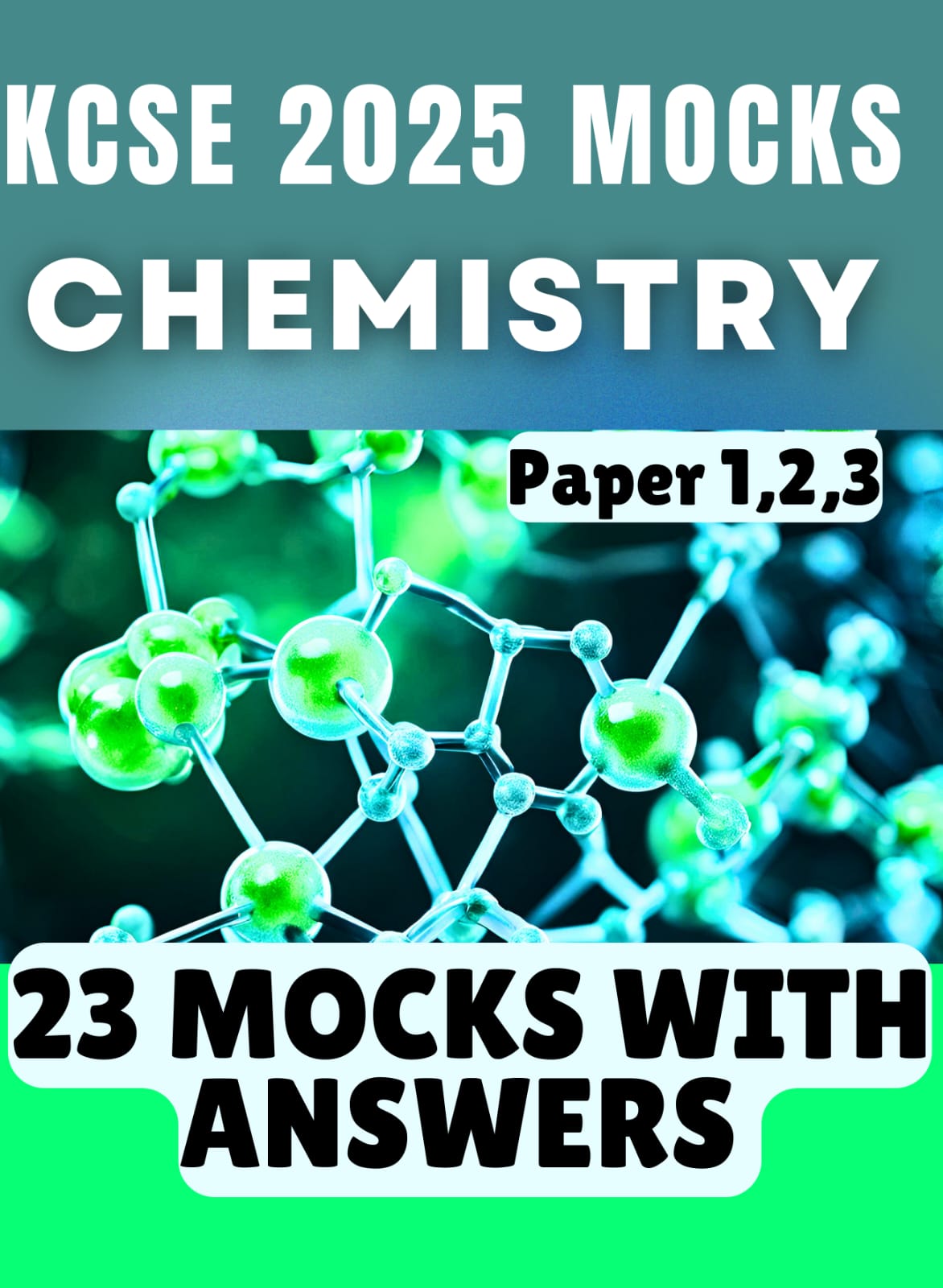
CEKENAS END OF TERM ONE – 2025 CHEMISTRYPAPER 1
CEKENAS END OF TERM ONE – 2025 Kenya Certificate of Secondary Education (K.C.S.E) 233/1 CHEMISTRYPAPER 1 INSTRUCTIONS TO CANDIDATES (a) Answer all the questions (b) Mathematical tables and silent electronic calculators may be used (c) All working must be clearly shown where necessary 1. a) By aid of diagrams, distinguish between a dropping funnel and a filter funnel. [1 mark] b) Give one reason why laboratory apparatus are made of plastic. [1 mark] 2. a) The table below shows indicators and their colors in acids and bases. Complete the table by filling in the gaps. [1 mark] Indicator Acid Base Methyl orange Yellow Colourless Pink b) How does the pH value of potassium hydroxide solution compare with that of ammonia solution? Explain your answer. [2 marks] 3. a) State one functional difference between a non-lum
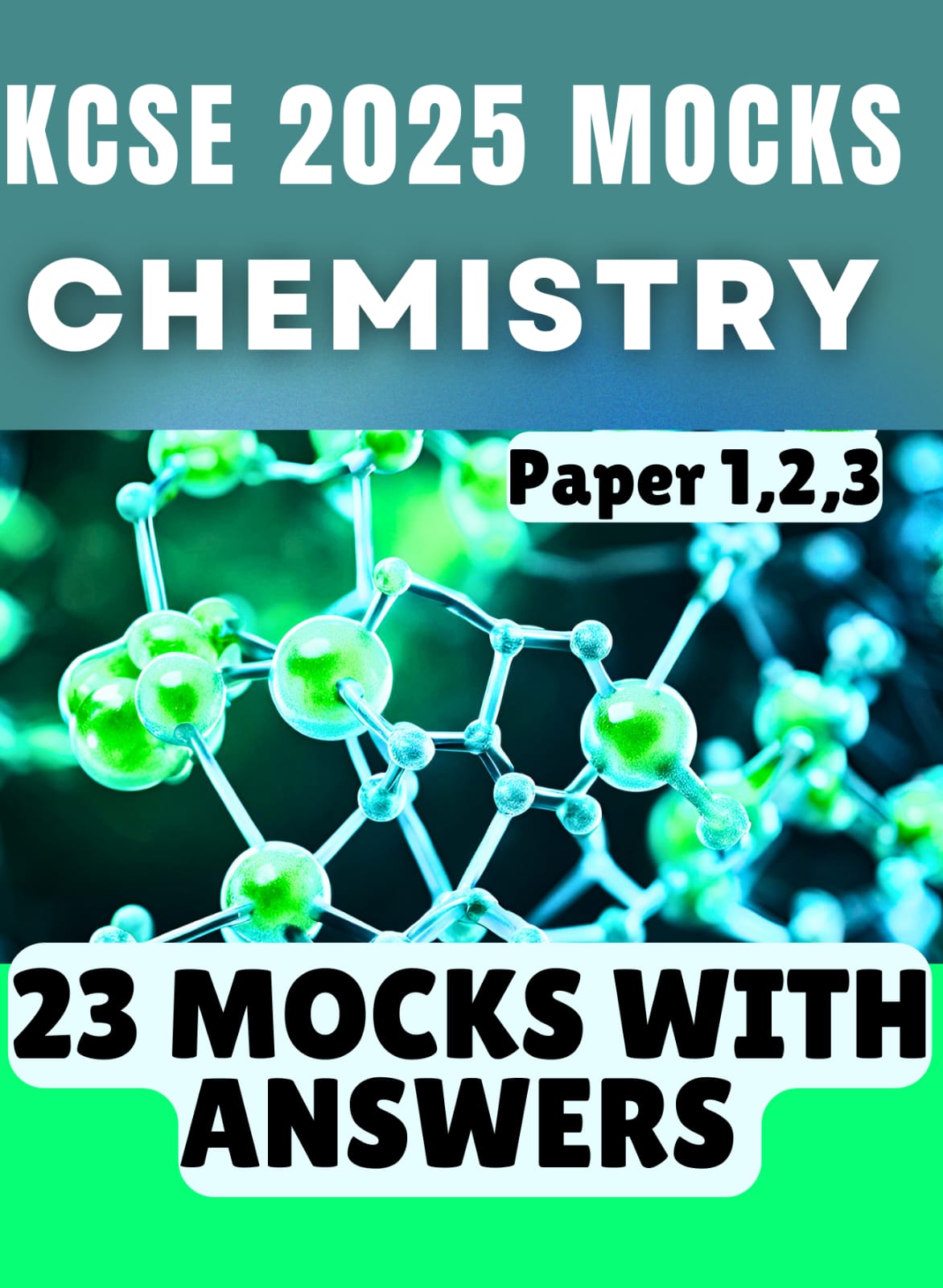
IMENTI SOUTH 233 CHEMISTRY PAPER 1
IMENTI SOUTH 233 /1 CHEMISTRY PAPER 1 1. Element W, X, Y and Z have their atomic numbers given as 2, 14, 18 and 20 respectively. Select a) Two elements in the same chemical family. (1 mark) b) An element which is in the fourth period on the periodic table. (1 mark) c) The element that has highest tendency to form covalent compounds. (1 mark) 2. Explain why the blue colour of aqueous copper (II) sulphate fades when a piece of magnesium ribbon is dropped into the solution. (2 marks) o o 3. The table below shows solubility of potassium bromide and potassium sulphate at 0 C and 40 C.
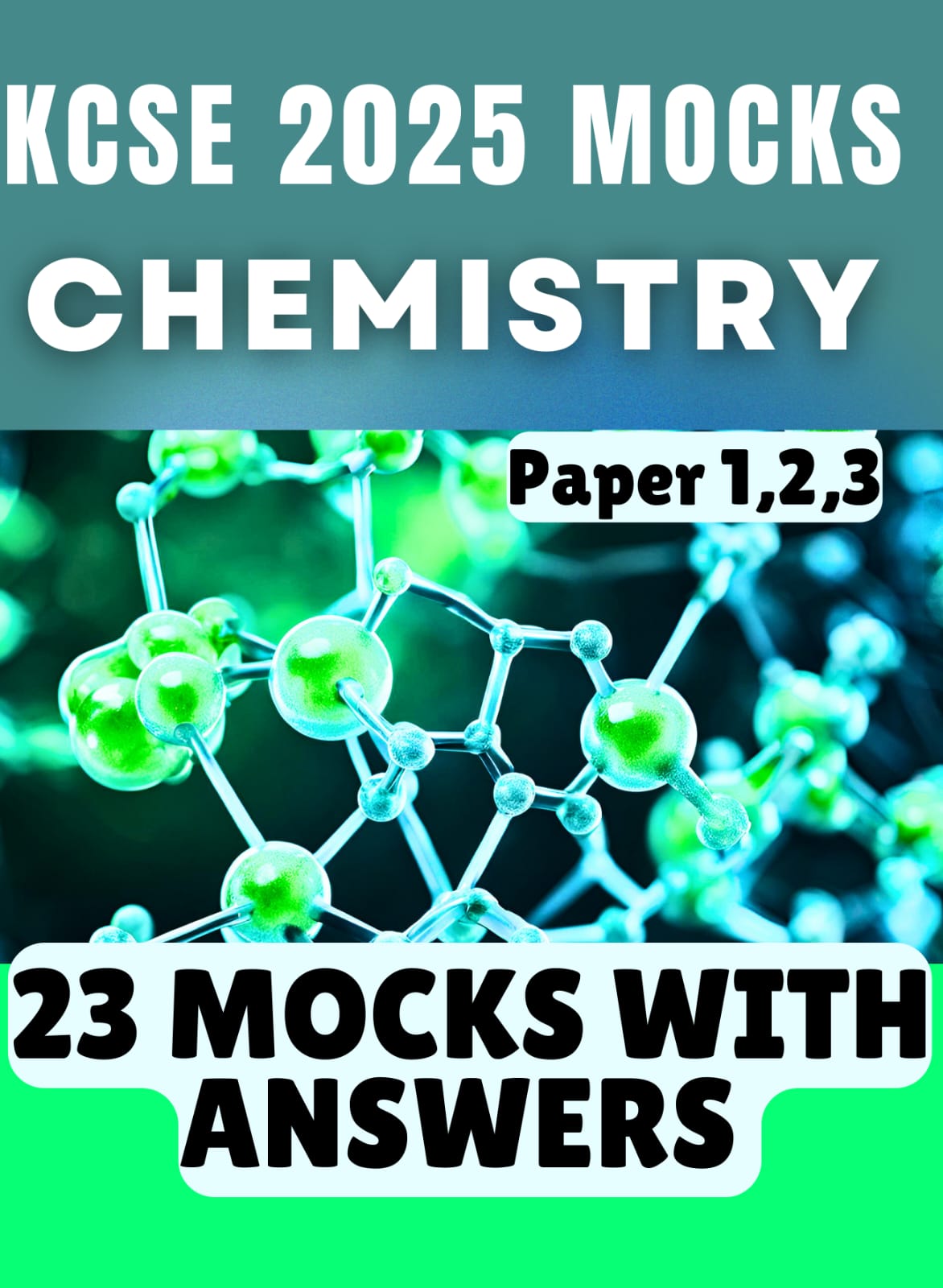
CATHOLIC DIOCESE OF KAKAMEGA EVALUATION TEST 233 CHEMISTRY PAPER 1
CATHOLIC DIOCESE OF KAKAMEGA EVALUATION TEST Kenya Certificate of Secondary Education (K.C.S.E) 233/1 CHEMISTRY PAPER 1 JULY 2025 2 HRS Instructions to candidates - Answer ALL the questions. - All working MUST be clearly shown. 1. The diagram below represents the apparatus used to react steam with magnesium. a. State one observation made in the boiling tube (1mark) b. Write an equation for the reacting that takes place in the boiling tube. (1mark) c. State the precaution required before the heating is stopped
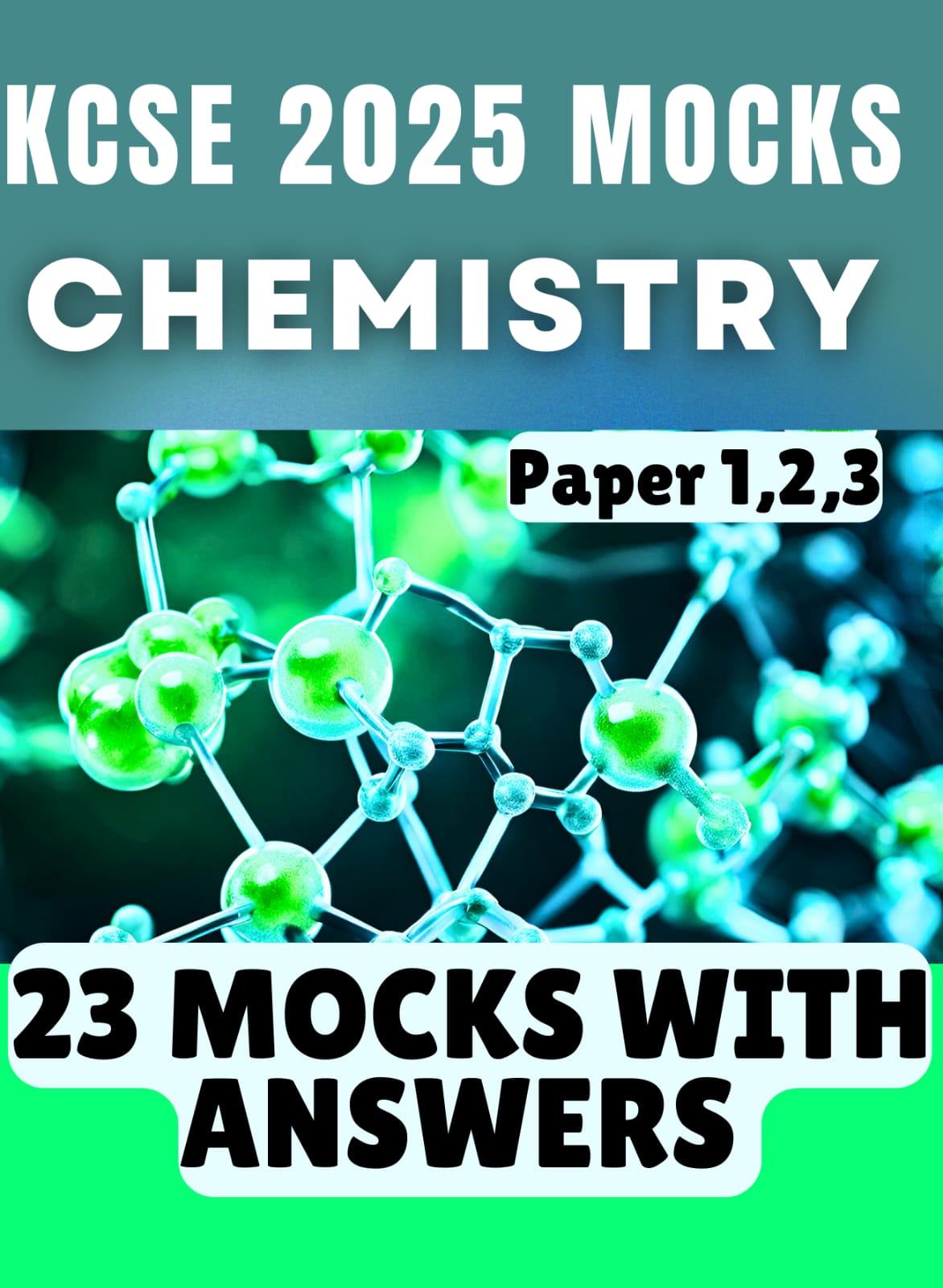
KIRINYAGA CENTRAL 233 CHEMISTRY PAPER 1 - (THEORY)
KIRINYAGA CENTRAL 233/1 CHEMISTRY PAPER 1 - (THEORY) JUNE/JULY 2025 23 + M 11 a) To which chemical family does the element belong? b) Write the electron arrangement of the atom. c) Using dots(•) or crosses ( X) to represent electrons draw the structure of the ion. 2. Study the diagram below and answer the questions that follow. 1. The ion of an element is represented as: (1mk) (1mk) (1mk) a) State and explain the observation made after two weeks. (2mks) b) Give one reason for silver plating an iron spoon. (1mk) 3. Two papers A and B were placed at different levels of a non-luminous flame. Paper A was placed at the lowest part of the flame while B was placed at the tip.
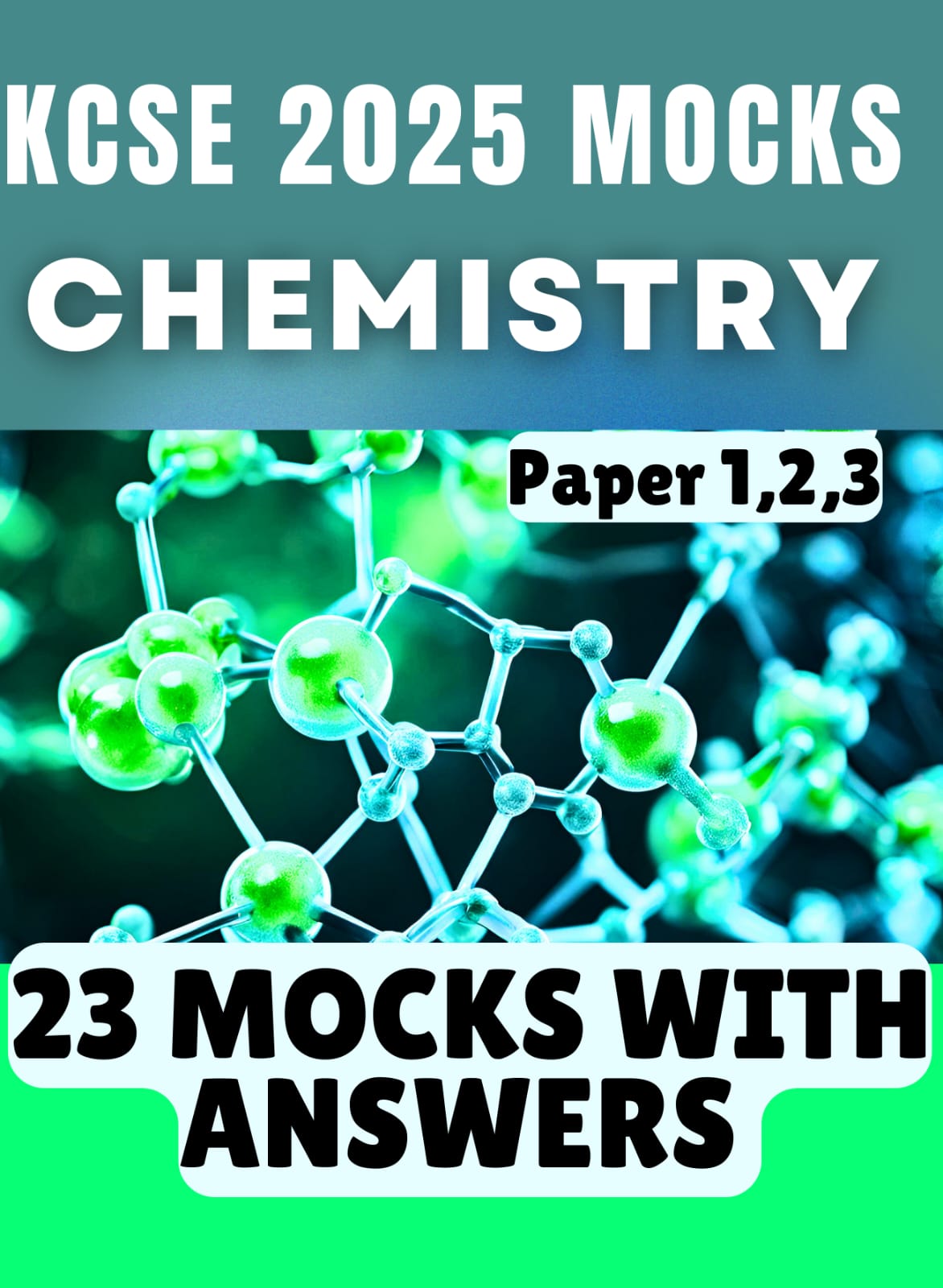
KIGUMO CLUSTER EXAMS TERM 2, 2025 233 CHEMISTRY PAPER 1
KIGUMO CLUSTER EXAMS TERM 2, 2025 Kenya Certificate of Secondary Education 233/1 CHEMISTRY PAPER 1 1. a) State one functional difference between a non-luminous and luminous flame (1 mk) b) Using a glass tube, describe an experiment to show that the most colorless region of a luminous flame contains unburnt gases. (2 mks) 2. Consider the reaction below. Cr2 O7-2(aq)- Cr2O4−2 (aq) i) Using oxidation numbers, explain whether the above reaction is a redox reaction or not. (2mks) ii) Define dynamic equilibrium (1 mk) 3. Dry sulphur (IV) oxide was passed through two pieces of coloured silk both in a gas jar as shown in the Diagram.
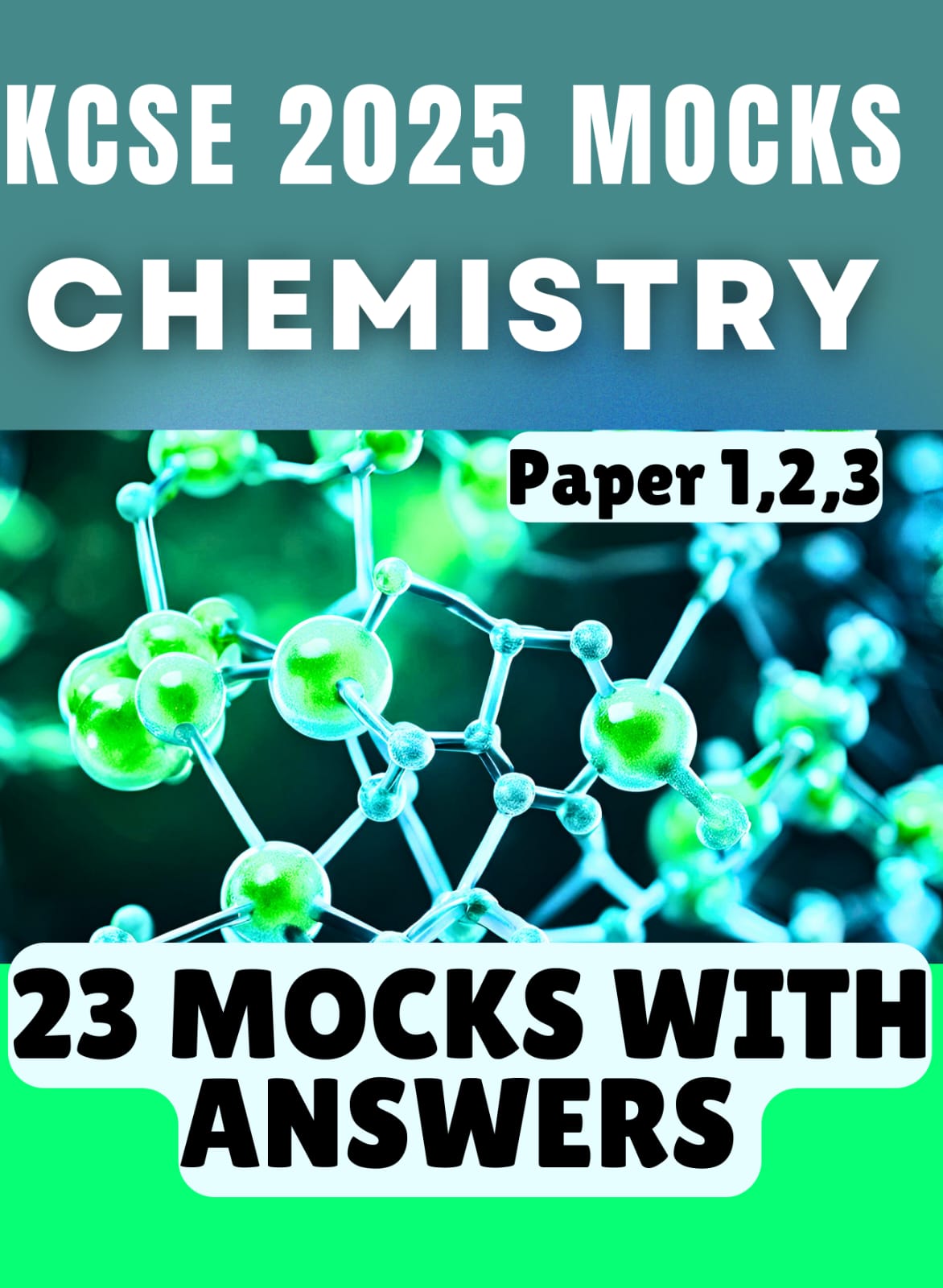
KIGUMO I SUB-COUNTY CLUSTER EXAMINATIONS 233 CHEMISTRY PAPER 1
KIGUMO I SUB-COUNTY CLUSTER EXAMINATIONS 233/1 CHEMISTRY PAPER 1 1. An ion of element P has 18 electrons, 16 neutrons and 15 protons. (a) Write the electron arrangements of an atom of element P (1mk) (b) What is the mass number of element P (1mk) (c) State the period and group of the periodic table does element P is found. Period: …………………………………. Group: …………………………………. (1mk) 2. (a) State Charles’s Law (1mk) 3 (b) The volume of a certain gas was measured at 21C is 15.9cm . At what temperature will the volume be doubled if pressure remains constant (2mks) 3. The figure below shows an apparatus used to separate a mixture of water and octane
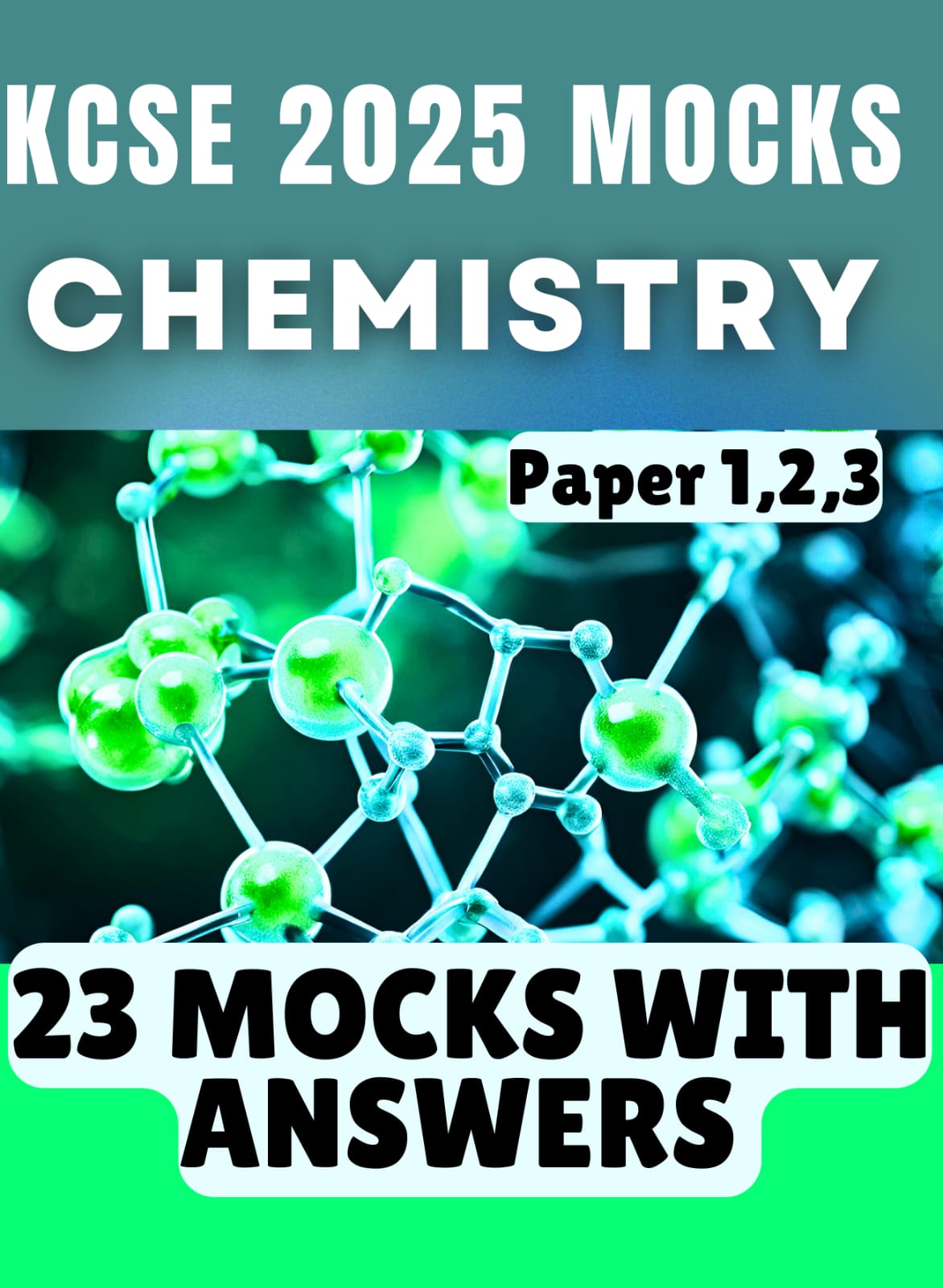
GATUNDU SOUTH JOINT EVALUATION TEST 2025 233 CHEMISTRY PAPER 1 - THEORY
GATUNDU SOUTH JOINT EVALUATION TEST 2025 Kenya Certificate of Secondary Education 233/1 CHEMISTRY PAPER 1 - THEORY JULY / AUGUST 2025 INSTRUCTIONS - Attempt ALL the questions in this paper. - Electronic non-programmable calculators or mathematical tables may be used. 1. Name the processes which takes place when (i) Iodine changes directly from gas to solid (1 mark) 2+ 3+ (ii) Fe (aq) to Fe (aq) (1 mark) (iii)White sugar changes to black solid when mixed with excess conc sulphuric (VI) acid (1 mark) 2. Paper chromatography is a method of separating colours or dyes. What two properties should the components of a mixture have that would make the separation possible. (1mark) 3. The table below shows the pH values of solutions J K, L, M, and N
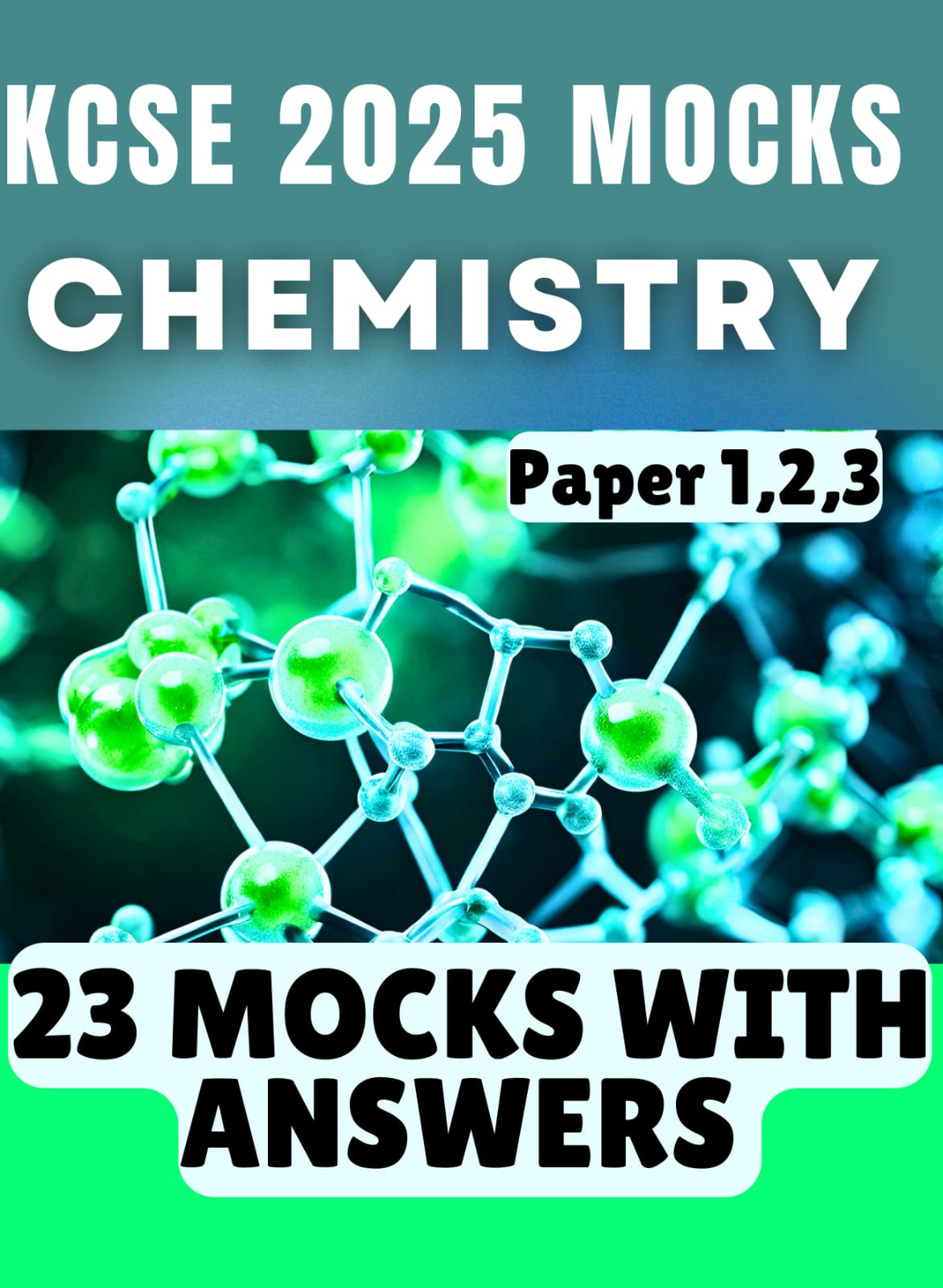
KIRINYAGA WEST 233/1 CHEMISTRY PAPER 1 - (THEORY)
KIRINYAGA WEST Kenya Certificate of Secondary Education 233/1 CHEMISTRY PAPER 1 - (THEORY) JUNE/JULY 2025 Instructions to candidates a. Answer ALL the questions. b. Mathematical tables and electronic calculators may be used. c. All working MUST be clearly shown where necessary. 1. Given below are pH values of different solutions. Solution PH value 2. 3. 4. 4. P 2.0 R 7.0 Q 14.0 T 5 a) Which solution i) Contains the highest concentration of hydroxide ions. (1mk) ii) is likely to be a solution of ethanoic acid (1mk) b) Name the reagent used to measure pH.
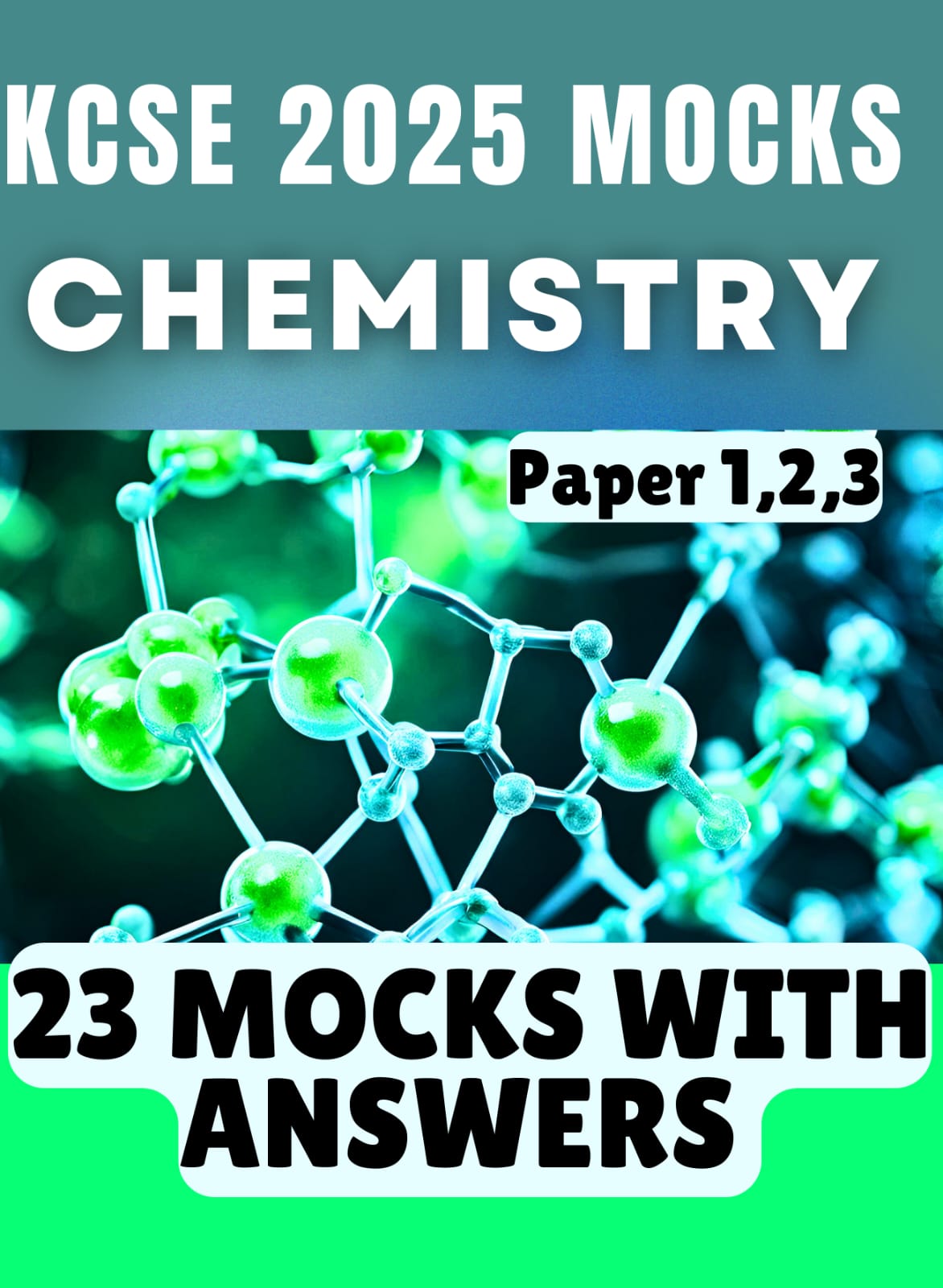
A.C.K DIOCESE OF MUMIAS JOINT EVALUATION 233 CHEMISTRY PAPER - THEORY
A.C.K DIOCESE OF MUMIAS JOINT EVALUATION 233/1 CHEMISTRY PAPER - THEORY JUNE 2025 INSTRUCTIONS TO CANDIDATES ▪ Answer all the questions in the spaces provided in the question paper. ▪ Mathematical tables and silent scientific calculators may be used. ▪ ALL the working must be clearly shown where necessary. 1. An ion of element A is represented by the formula; 40 A 2+ 20 a) Write the electron arrangement of the ion. (1 mark) b) Draw a labelled diagram showing the atomic structure of A. (2 marks) 2. Name the apparatus that can be used to: a) Store and keep substances free from moisture. (1 mark) b) Measure volume of solutions more accurately than a beaker. (1 mark) 3. A student tested the pH of solution I, II, III, IV and V using universal indicator and obtained the results
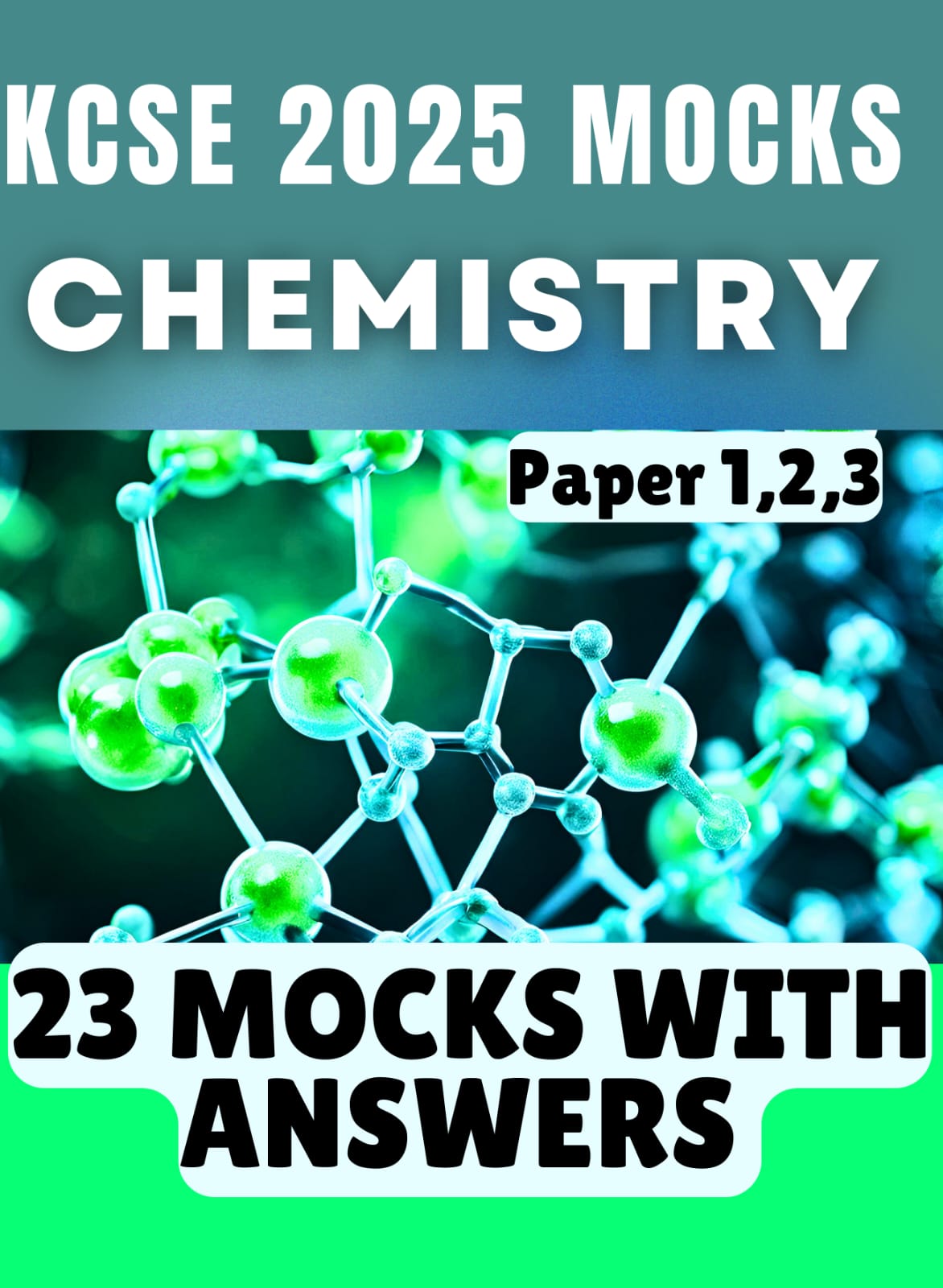
MURANGA SOUTH - END TERM 1 - 2025 233 CHEMISTRY PAPER 1
MURANGA SOUTH - END TERM 1 - 2025 233/1 CHEMISTRY PAPER 1 1. The set-up below shows the catalytic oxidation of ammonia in the laboratory. (a) State and explain the observation made. (2marks) (b) Write a chemical equation for the first reaction taking place in the conical flask. (1 mark) 2. When sulphur is heated in a boiling tube in the absence of air, the yellow crystals melts into a golden yellow mobile liquid at 113°C. The liquid changes at 180°C into a dark brown liquid that is very viscous. Heating at 400°C produces a brown less viscous liquid.) (a) Draw the molecular structure of sulphur in the yellow liquid. (1 mark) (b) Name two allotropes of sulphur. (2 marks) 3. Iron (III) oxide was found to be contaminated with copper (II) sulphate. Describe how a pure sample of iron (III) oxide can be obtained. (3 marks) 4. Study the diagram below then use it to answer the questions that follow.
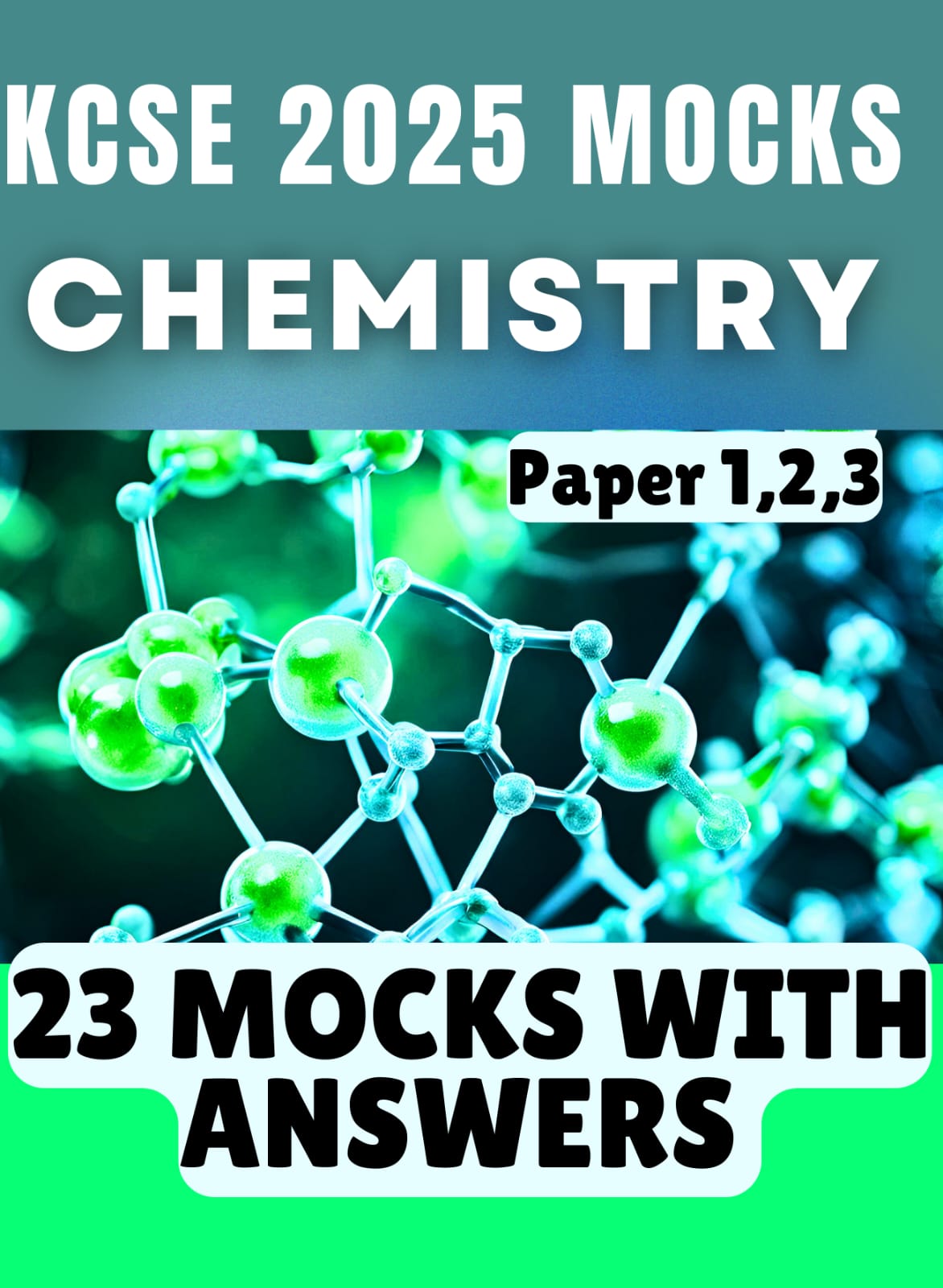
MURANGA SOUTH - 2025 OPENER EXAM TERM 3 CHEMISTRY PAPER 1 - THEORY
MURANGA SOUTH - 2025 OPENER EXAM TERM 3 Kenya Certificate of Secondary Education (K.C.S.E) 233/1 CHEMISTRY PAPER 1 - THEORY 1. Draw a labelled diagram showing; (i) The atomic structure of 23 (2 marks) 11𝑁𝑎 1 + (ii) The ionic structure of 1𝐻 (1 mark) 2. (a) State two advantages of using glass over plastic apparatus in the laboratory. (2 marks) (b) Name the apparatus used to keep substances free from moisture. (1 mark) 3. (a) Which homologous series is represented by each of the following general formulae? (i) CnH(2n-2) (1mark) (ii) CnH(2n+1) COOH (1mark) (b) Raw rubber is heated with Sulphur in the manufacture of natural rubber. Why is the process necessary? (1mark) 4. The graph below shows the mass of a radioisotope plotted against time.
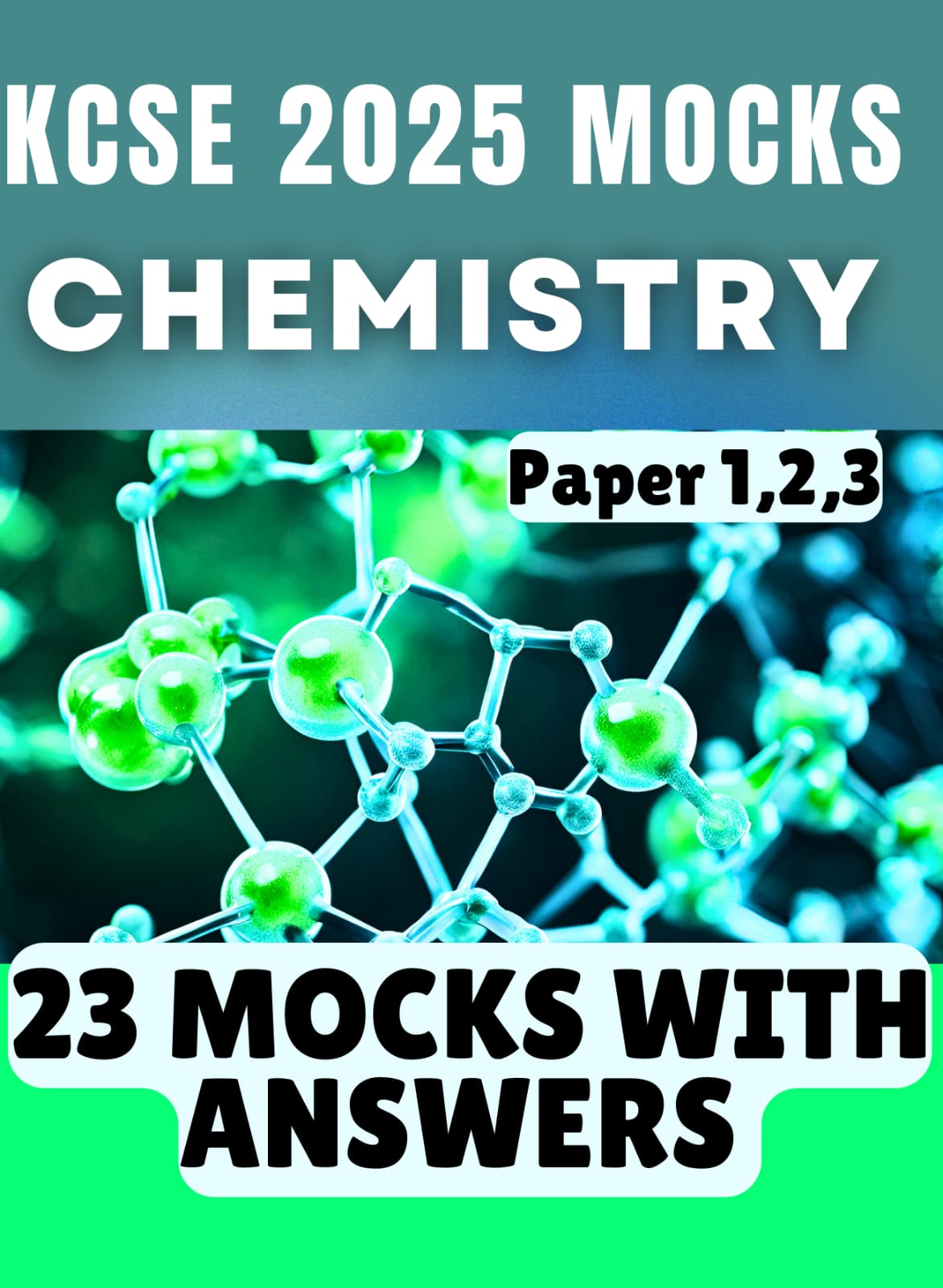
NAVAKHOLO JOINT EVALUATION TEST 233 CHEMISTRY PAPER 1-(THEORY)
NAVAKHOLO JOINT EVALUATION TEST Kenya Certificate of Secondary Education 233/1 CHEMISTRY PAPER 1-(THEORY) Instructions to candidates (a) Answer ALL the questions (b) ALL working MUST be clearly shown (c) Non-programmable silent electronic calculators and KNEC mathematical tables may be used 1. Describe the safest way one can light a Bunsen burner in the laboratory. (2 marks) 2. a) Describe how one can prepare natural indicator from leaves of plants. (2 marks) b) Explain why this indicator is not suitable in determining the strengths of acidic or basic solutions . (1 mark) 3. a) Describe how one can prepare 2M sodium hydroxide using a 1 litre volumetric flask. (2 marks) b) Explain how one can deliver 2M sodium hydroxide solution into a burette. (1 mark) 4. a) Describe how one can prepare dilute sulphuric acid from concentrated sulphuric acid using a beaker (11/2 marks) b) Describe how one can find the pH of the 2M sulphuric acid solution. (11/2 marks) 5. The pH values of A, B, and C are as shown in the table. Solution A B C pH values 9.7 2.1 5.3 Name of
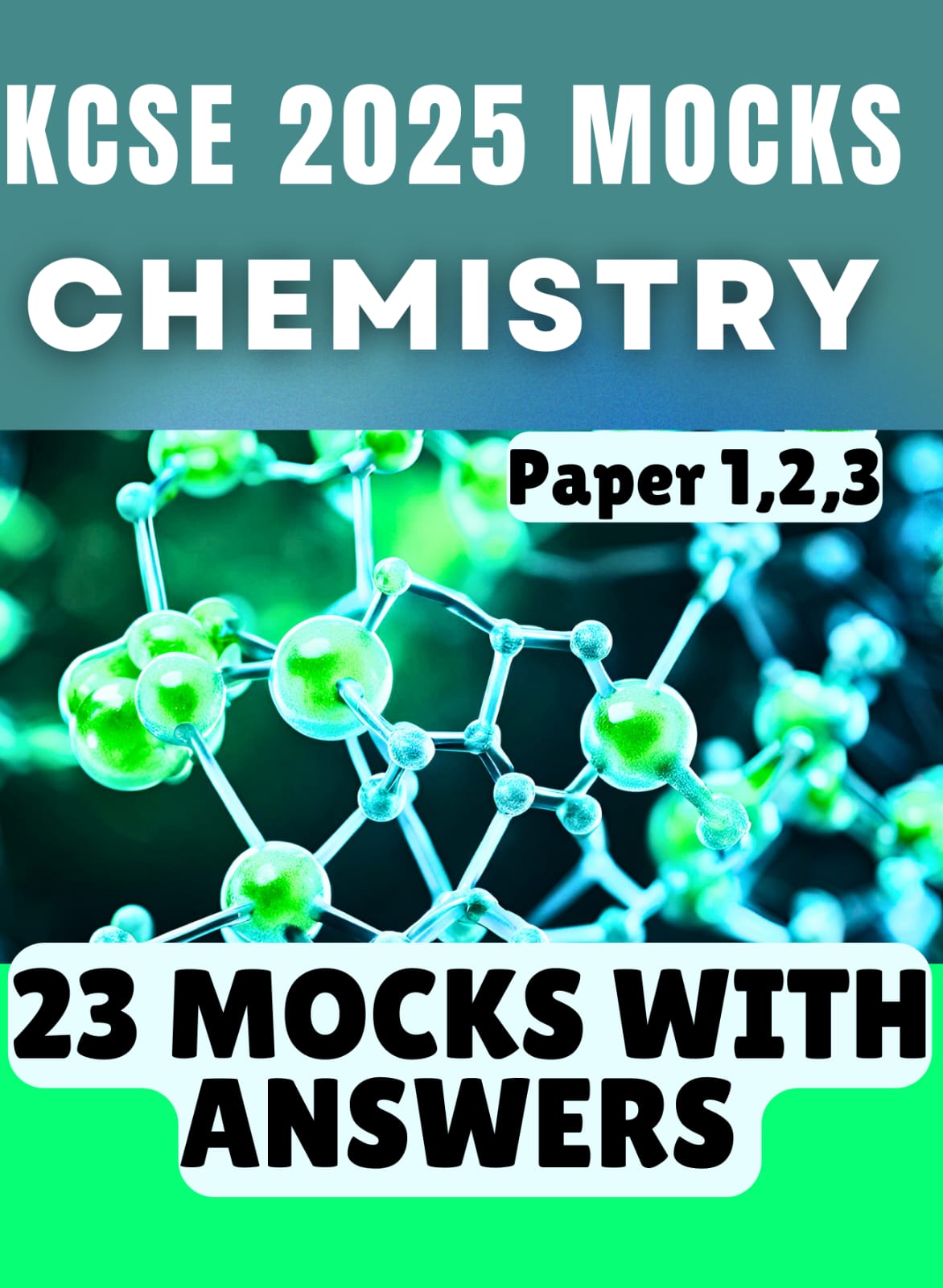
MUSLIM SCHOOLS JOINT EXAMINATIONS TEST (MUSJET) – FORM 4 CHEMISTRY PAPER 1
MUSLIM SCHOOLS JOINT EXAMINATIONS TEST (MUSJET) – FORM 4 Kenya Certificate of Secondary Education 233/1 CHEMISTRY PAPER 1 JULY 2025 INSTRUCTIONS TO CANDIDATES Answer ALL questions in the spaces provided. 1. The diagram below shows two methods of gas collection in the laboratory. 2. 3. 4. 5. (a) Name the methods I and II. (2mks) (b) From the methods above, identify one that is appropriate for the collection of carbon (ii) oxide. (1mk) When lead (ii) nitrate is heated one of the products formed is a brown gas. (a) Write the equation of the reaction that occurs. (1mk) 3 (b) If 10.30dm of the brown fumes were produced, calculate the mass of the lead (ii) nitrate that was heated. (RFM of Lead (ii) nitrate = 331, molar gas volume = 24dm3).
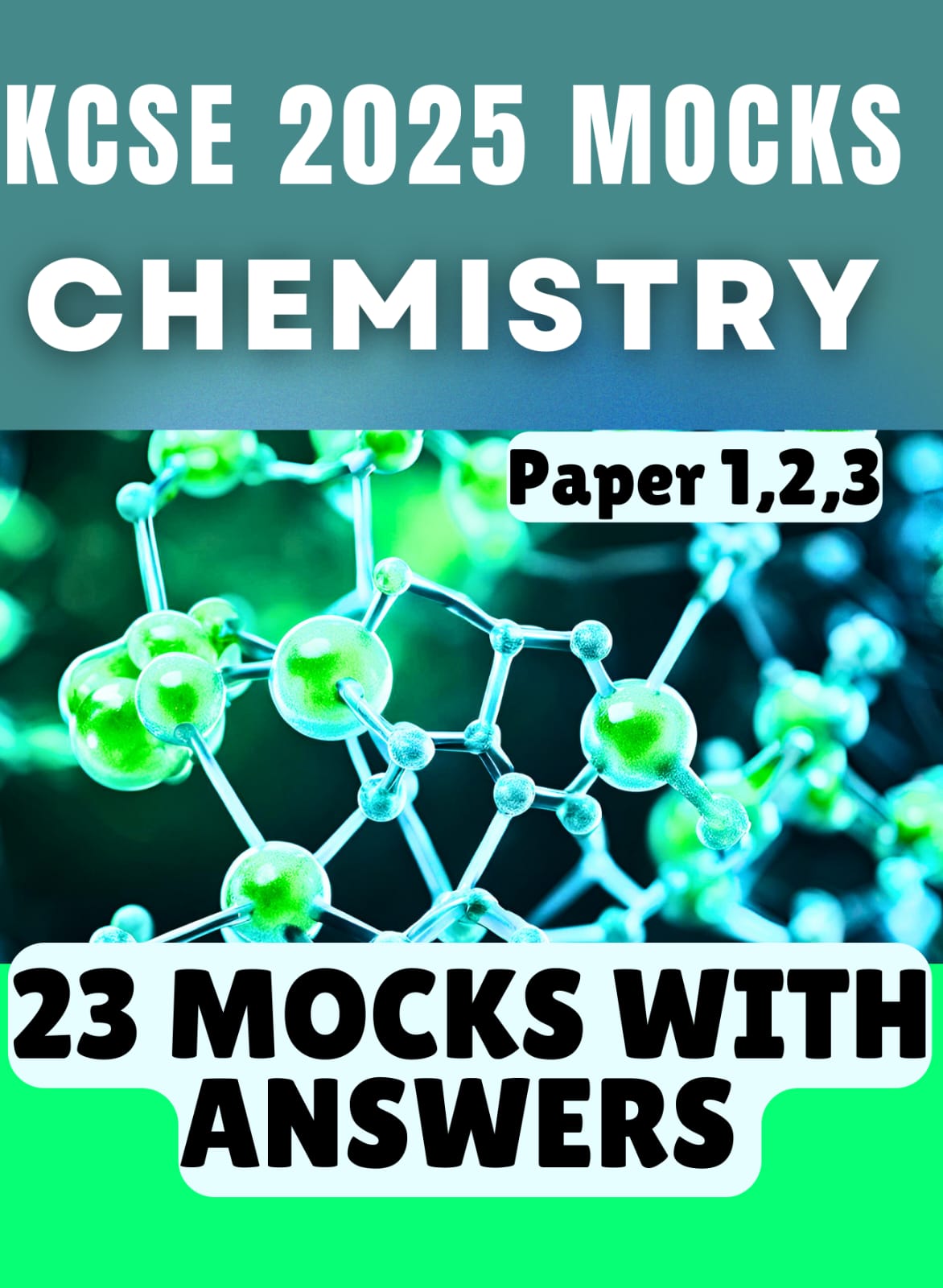
BOKAKE CLUSTER EXAMINATIONS END OF TERM 2, 2025 223 CHEMISTRY PAPER 1
BOKAKE CLUSTER EXAMINATIONS END OF TERM 2, 2025 223/ 1 CHEMISTRY PAPER 1 1. The diagram below shows the physical state of matter (a) Name the processes represented by letters R, V, T and S (2 mks) (b) Name two substances which undergo process T. (1 mk) 2. Rock salt is a mixture of the soluble salt, sodium chloride, and some insoluble impurities. The diagram shows the first three stages of a method used to obtain pure sodium chloride from rock salt.
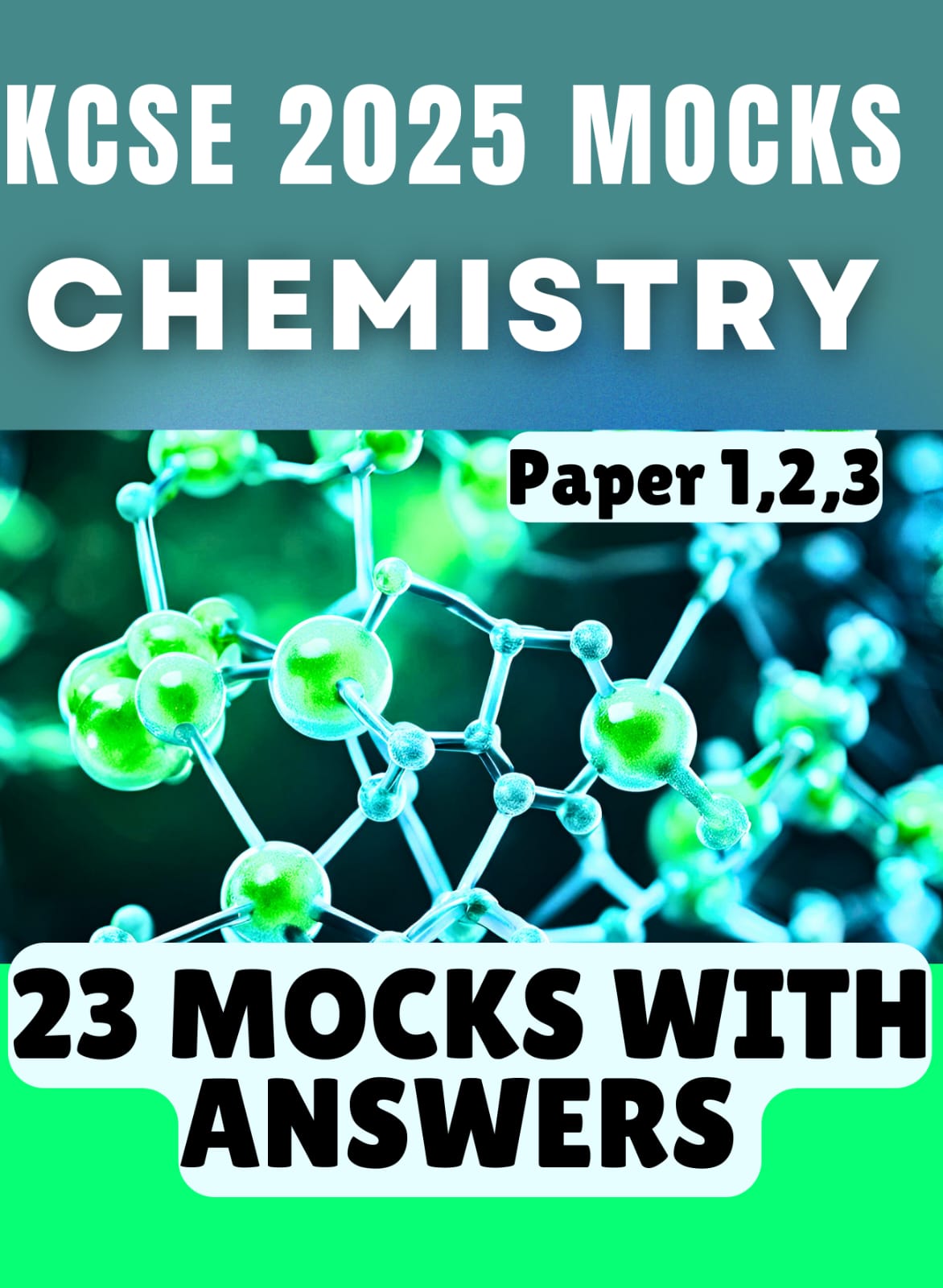
BOKAKE I CLUSTER EXAMINATIONS 233 CHEMISTRY PAPER 1 THEORY
BOKAKE I CLUSTER EXAMINATIONS 233/1 CHEMISTRY PAPER 1 THEORY 1. The diagram below shows the process used in mining sulphur. Study it and use it to answer the questions that follows
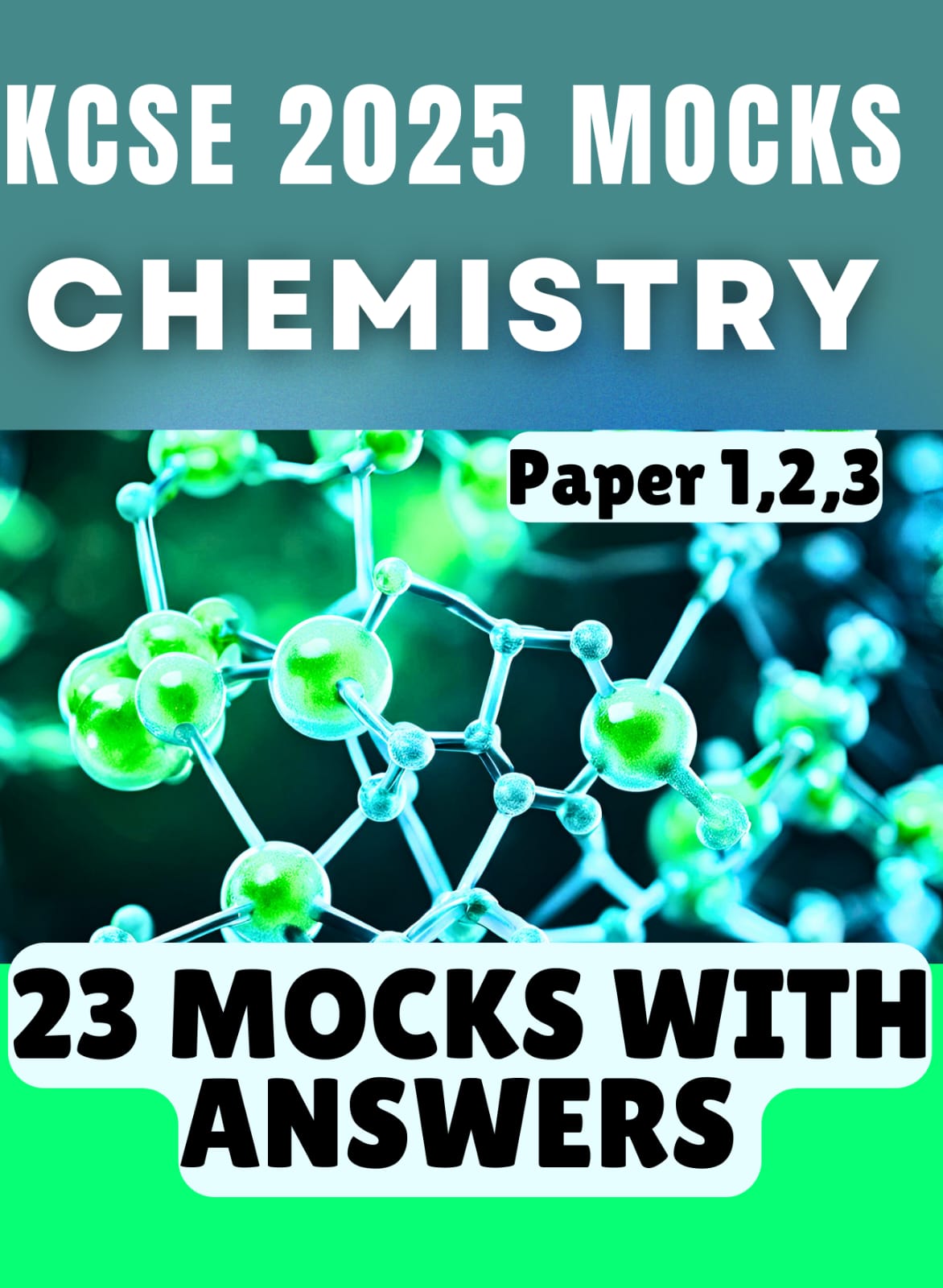
EASTERN CLUSTER EVALUATION 233 CHEMISTRY PAPER 1
EASTERN CLUSTER EVALUATION 233/1 CHEMISTRY PAPER 1 1. Ammonium nitrite was heated as shown below. (i) Give a suitable material that can be used to make apparatus L, explain your answer. (ii) Write a chemical equation for formation of gas R. 2. Dilute hydrochloric acid and sodium sulphite were reacted as shown below.
Other Categories You Might Like
Subscribe to Our Newsletter
Get updates on new book releases, educational resources, and special offers.
We respect your privacy and will never share your email with anyone else.